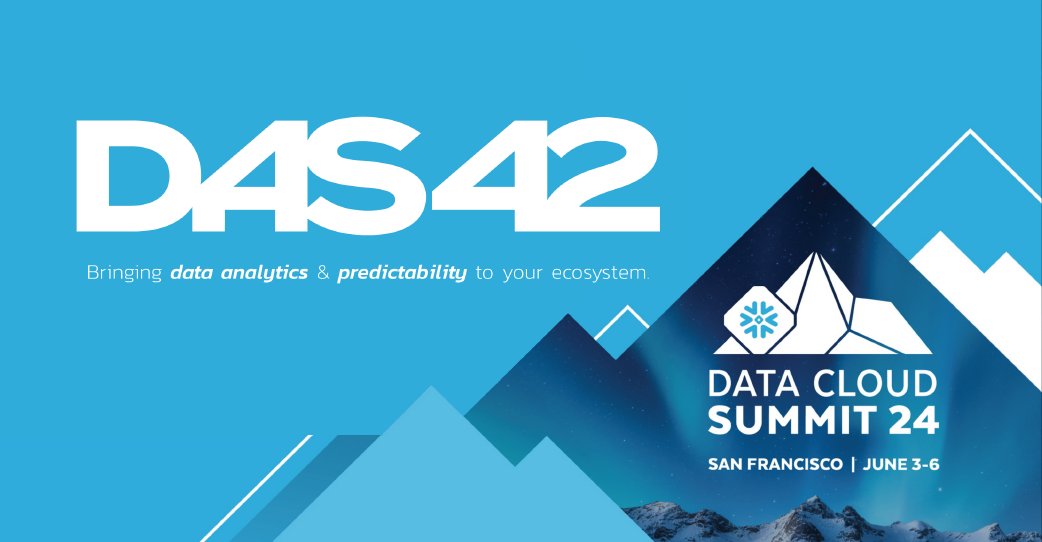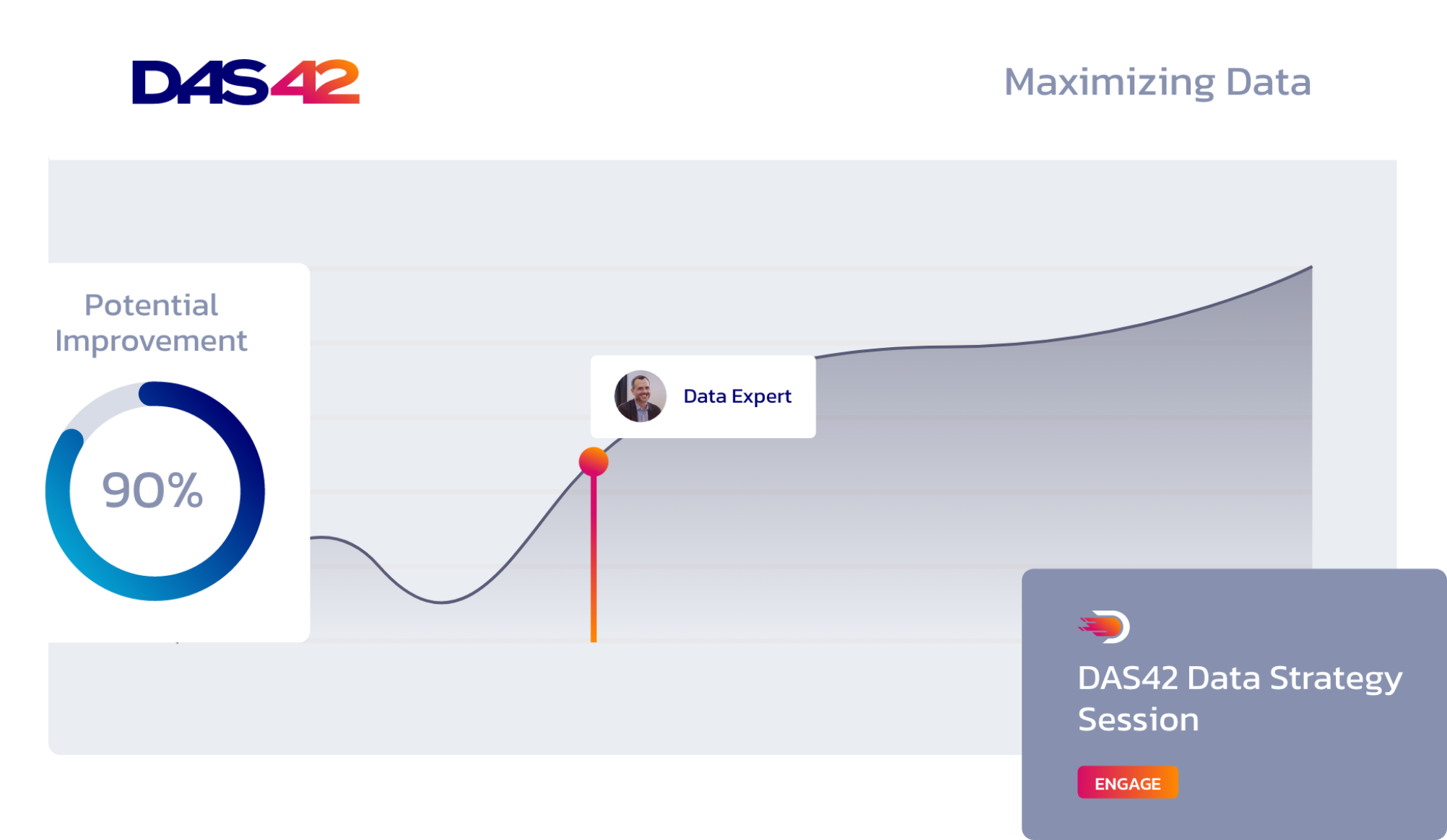Outfitting your organization with a modern data stack constitutes a huge milestone in securing the future of your business.
But it’s only the first step in a journey that can transform your organization.
As parts of your organization adopt a business intelligence platform into their day-to-day processes, they quickly see the benefits. To build on that success, your next goals should center on extending the reach of data analytics throughout your organization. By taking a holistic view of the capabilities of your data, you can improve existing workflows in ways you may not have previously considered.
Establishing your data as a trusted resource requires time, energy, and a considerable amount of effort. To ensure a strong return on your investment, data analytics should permeate your entire business.
Leveraging the power of these platforms doesn’t just streamline your operation; it increases adoption rates for your new data stack. As a result, your digital transformation initiative grows much more powerful
Build data-driven workflows
Implementing an effective Looker rollout plan ensures your organization gets its analytics program started on the right foot. Using the Looker API, you can also transform a number of manual workflows into new, data-driven applications.
By gathering fresh insights into customer behavior on multiple digital channels, data analytics constitutes a revolution for your sales team. However, with the addition of business intelligence, even those who spend their days using a CRM platform like Salesforce see opportunities for new and improved workflows.
Once the Looker API has been incorporated into Salesforce, your sales team tracks prospective leads alongside a dashboard that reflects their website activity. Instead of relegating your data and its capabilities to a separate application outside of your team’s day-to-day process, analytics is folded into their existing workflow.
By incorporating data into existing processes, your teams are more likely to use it every day.
Operationalize your data
As teams grow more adept at slicing and dicing your data in their daily processes, you can operationalize more complex processes as well.
For your marketing team, Looker provides new avenues for parsing specific cohorts for email promotions. Through business intelligence software, you can mine your customer database for specific traits and quickly generate a new campaign.
Data analytics allows your sales team to identify customers who have not made a purchase within a given period, such as 30 days. Once this group has been identified, you can then target them for a coupon or other promotion in an effort to drive more sales.
Prior to implementing a modern data stack, your team’s manual workflow would require identifying these customers and then exporting their contact information into a separate email tool like MailChimp. With Looker, your team can create a list and quickly build a new campaign in a marketing automation platform with a single click.
Automate workflows through data integration
With trusted and governed data at your disposal, you build custom, automated applications to suit your business.
For example, imagine an e-commerce site stocks a range of products so broad that separate teams are assigned to managing pricing and inventory for each. With Looker, analytics specialists can build a custom application that generates a curated view of pricing relative to other outlets. When teams recognize a change, they can use the application to update pricing across the store’s inventory and stay competitive.
While a web app like this is technically complex to implement, its development allows Looker to do more than power your data analytics. It’s now informing and updating your specific business processes.
Similarly, a modern data stack allows your marketing, sales, and inventory data to be unified into a single, centralized resource. By drawing all of these details into a data warehouse like Snowflake, your analytics platform allows you to access and adjust your online ads in real time.
If a product is no longer available, sales teams can then manually pause display advertisements and avoid incurring further costs. Or, through additional programming, you can implement an automated rule that pulls the ad once your analytics platform recognizes a product is out of stock.
Provide additional value to your customers
Designing curated experiences with business data allows internal teams to make better decisions. But you don’t have to stop there. Business analytics also allows you to incorporate its reporting into a customized portal that can be distributed to your clients, vendors, and partners.
Advertising agencies can use a platform like Looker to illustrate campaign success for their clients. Rather than using resources to manually compile performance metrics into presentations, agencies can offer a custom dashboard with results tailored to the client’s needs. In addition to offering a tailored, self-service experience, the dashboard provides results on-demand and in real-time.
Similarly, retailers could design custom dashboards for suppliers to illustrate customer habits and product performance. With a custom portal, vendors enjoy a guided, branded experience that reflects the analytics reports specific to their needs. Once implemented, your organization could charge partners and vendors an additional fee for these portals as part of a higher-tiered experience.
By extending your data’s reach beyond internal users, you also extend your return on investment.
Deliver data governance and machine learning modeling
A business intelligence platform like Looker bridges the gap between your data storage solution and your business. Cloud-based data warehouses like Snowflake are built upon highly technical data science and SQL queries. Looker provides a trustworthy, user-friendly means for teams to access your data.
Instead of needing to consult analytics teams to code database queries, your users can use a tool like Looker to generate a complex SQL query using recognizable business terms like sales and revenue. And, through Looker’s governance capabilities, your teams know they’re generating accurate, consistent conclusions. Any approved changes to how your business calculates its critical information are reflected across your organization.
These data governance capabilities are also useful if your organization is building a machine learning model. Typically, analytics teams need to write a complex query to extract data from a data warehouse into a machine learning model. Instead, you can use the Looker API to retrieve your business information and power machine learning with recognizable terminology and the latest data.
Incorporating analytics into new workflows builds a data-driven culture
With the flexibility of Looker, your whole organization stands to function more efficiently. In addition to extending the benefits of a trusted data source to teams that are often overlooked, you can dig deeper to automate or streamline existing processes.
Harnessing the power of your data stack to introduce new possibilities in customer service, sales, and marketing isn’t always an easy process. However, it’s an effort that doesn’t just further the possibilities of how your teams work and make decisions. It allows your whole organization to go further as well.
Services provided









